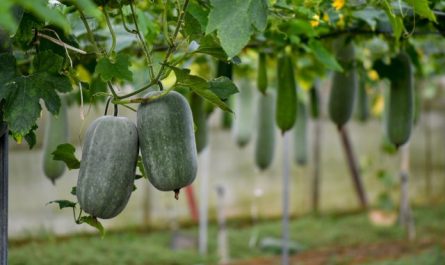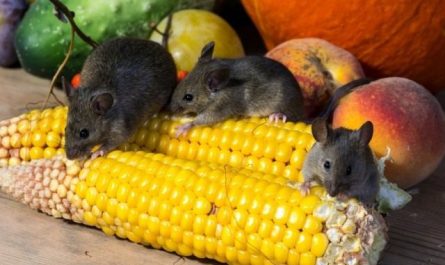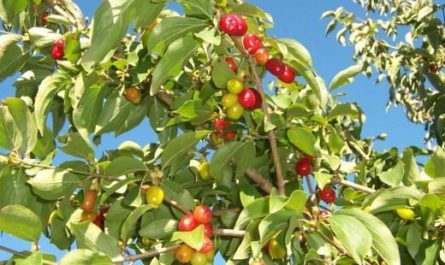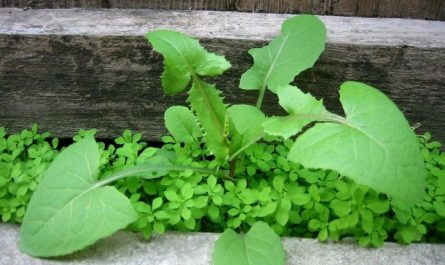The Romans were the first to “tame” broccoli (Brassica Oleracea convar), as evidenced by the name of one of its varieties – italica. From southern Italy, broccoli came to Byzantium, and then to other countries. Today, this cabbage is extremely popular in Western Europe, Japan, Canada and the USA. In our country, little is known about it, although since the 19th century, the following varieties have been grown in Russia: Black Sicilian, White и Purple Cyprus, Danish Dwarf. Portsmouth.
Asparagus cabbage, or broccoli, is an annual plant from 70 to 100 cm high with wide, long-petiolate (up to a quarter of a meter) leaves. Like cauliflower, it is grown for its heads – shortened modified inflorescences, only in broccoli it looks like a bunch of underdeveloped and strongly twisted flower buds, closed with green, dark green or purple sepals.

© Rasbak
In terms of nutritional and dietary properties, this cabbage surpasses cauliflower: it has one and a half times more protein and mineral salts, it accumulates up to 150 mg of vitamin C per 100 g of raw mass. And its young leaves are not inferior to spinach and kale. Broccoli removes heavy metal salts, is rich in carotene and the amino acid methionine. Regular consumption of broccoli in food reduces the level of cholesterol in the blood and prevents the development of atherosclerosis. That is why it is irreplaceable in therapeutic nutrition.
Of all Broccoli is probably the most unpretentious: cold-resistant, can grow even on heavy loams, the least moisture-loving. Late-ripening varieties can withstand frosts down to -10°. And in the southern regions of Russia, some varieties can overwinter and please with a harvest in April-May. There it can even grow as a perennial.
And yet, broccoli produces high yields in a well-lit place at a moderate temperature, on light and medium loamy soil, fertilized in the fall with organic (8-10 kg / sq.m) and mineral (40-50 g / sq.m of potassium salt and superphosphate) fertilizers. In the spring, two weeks before planting seedlings or sowing seeds, 60-80 g / sq.m of ammonium nitrate or urea are added.

© Donovan Govan
Broccoli is grown using seedlings and without seedlings. To harvest earlier (at the end of June) and enjoy it longer in the fall, broccoli is grown using seedlings, sowing seeds in pots at several times with an interval of 10-20 days from mid-March to the end of May. Ready seedlings (35-45 days old with five to six leaves) are planted, respectively, from the end of April to the end of June. Large heads, up to 12 cm in diameter, can be obtained by placing 4-6 plants per 1 sq.m. If you plant more often, the side shoots will develop poorly after cutting the main stem, so the plants are planted in the first half of May according to the scheme 30-40 × 60-70 cm.
Broccoli is sown directly into the ground in the south. Several seeds are placed in nests at the same distance as when planting seedlings. The seedlings are thinned out, leaving two or three plants in a nest at first, and after one and a half to two weeks – one at a time.
To ensure that the heads are large, it is necessary to constantly loosen the soil between the rows, water, protect from common pests and diseases with other cabbages, and feed two or three times per season.

© Forest & Kim Starr
Temperature has less effect on the formation and development of broccoli heads than cauliflower. However, in cool summers, head growth increases, and in hot summers, leaf growth increases.
It’s important choose the right variety. Early ones produce small heads and often bloom prematurely. In summer, those that produce fewer leaves at high temperatures are preferable.
The register of breeding achievements includes five varieties and hybrids of broccoli:
- Russian early ripening Tone with small bluish-gray leaves, a dark green, excellent-tasting, medium-density head up to 8 cm high and weighing up to 200 g; yield 2 kg/sq.m;
- Dutch mid-season hybrid F1 Fiesta, resistant to fusarium and adverse conditions, with long blue-green leaves and a dark green, very dense head of medium size, partially covered with leaves; does not form lateral shoots; yield 3,5 kg/sq.m;
- Dutch late-ripening variety Continental with a stable yield of up to 2,2 kg/sq.m. of even green open heads weighing up to 600 g;
- Czech mid-season variety Linda with elliptical grey-green leaves and a medium-dense green, open head weighing 300-400 g; it is better to plant according to the 50×50 cm scheme; after cutting, it additionally forms up to 7 heads of 70 g each; gives a stable yield of 3-4 kg/sq.m;
- Japanese mid-season, high temperature resistant hybrid F1 Arcadia with medium-sized bluish leaves and a dark green, dome-shaped, dense head up to 450 g, yielding up to 1,5 kg/sq.m.

© Makro Freak, Richard Bartz
Period The harvesting period for broccoli is short, as the head quickly falls apart when ripe. A fully formed head has a diameter of 8-20 cm. The central head is harvested before the buds begin to bloom. If at least one inflorescence is allowed to bloom, the heads become hard and tasteless, and the side ones stop growing. They are cut off in the cool time of day together with a 10-15 cm long stem, which is also used as food. The heads growing on the side shoots are removed after two to three weeks, when they are 4 cm in diameter.
In open ground, broccoli is harvested before stable frosts, in a greenhouse – until the end of November. At room temperature, the heads wither and turn yellow in one or two days, and in such conditions it cannot be kept longer. Broccoli is stored in the refrigerator for a week. You can keep it fresh like this: after harvesting, immediately spray the cabbage with cold water, put it in plastic bags with pieces of ice and cool to 0 °. Broccoli is also good to freeze.
The recipe for cauliflower dishes is also quite suitable for broccoli. Salads, soups, side dishes are prepared from it, but it is especially tasty when marinated.
Try the following recipe: Divide the dense heads into small florets and boil for 2-3 minutes in boiling water with salt and citric acid (per kilogram of broccoli – 5 liters of water, 50 g of salt, 3 g of citric acid). Then quickly cool the florets in water, place them in steamed jars and pour in the marinade: for 2,5 liters of water – 1,5 cups of vinegar, 0,5 cups of granulated sugar, 10 peas of allspice and several bay leaves.
Materials used:
- V. Bakulina, State Commission of the Russian Federation for testing and protection of selection achievements




















